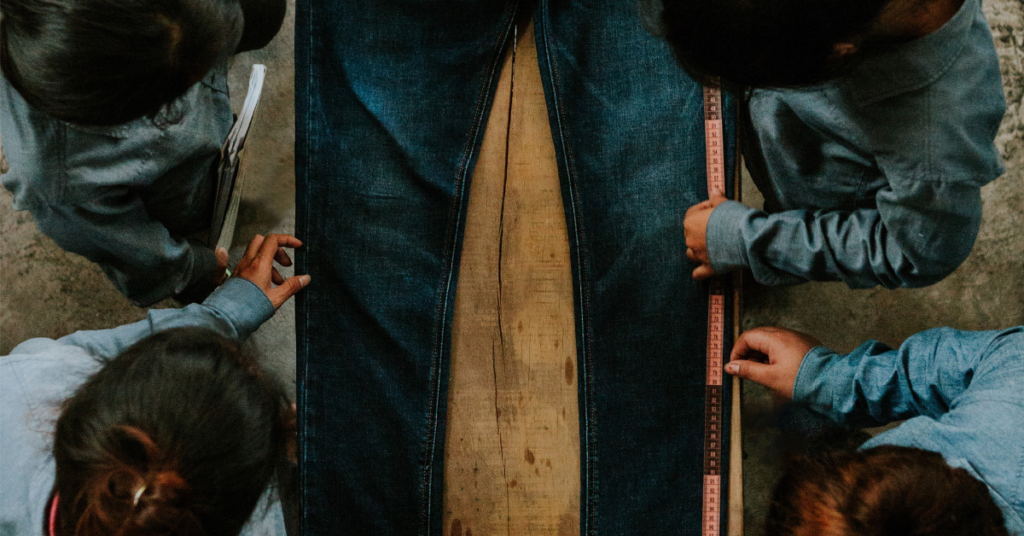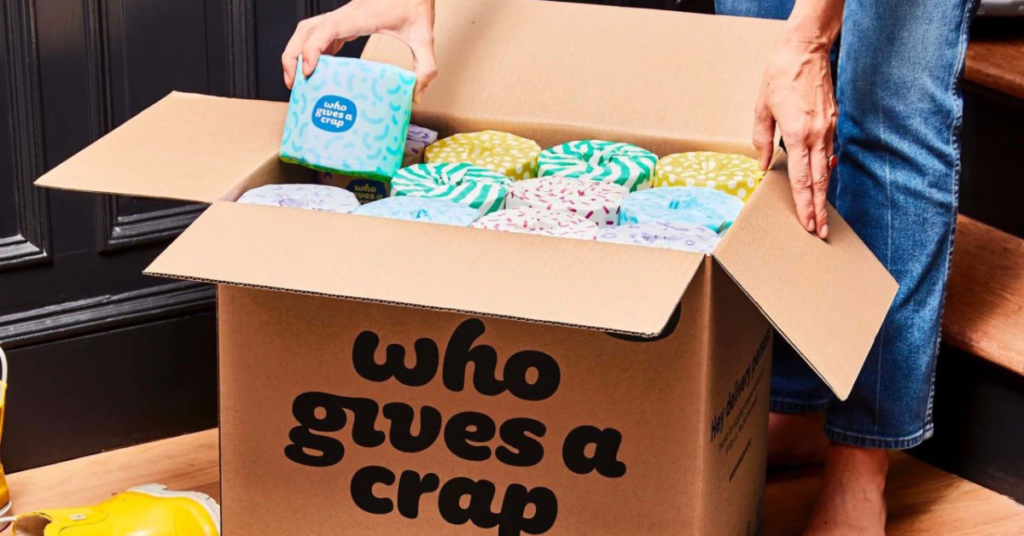A deep dive into Impact Business Models and unlocking higher impact in the BIA.
Have you ever looked at a B Corp’s ‘B Impact Score’ in the Directory and thought to yourself: how did they earn so many points? Chances are it’s because they have an Impact Business Model (IBM). Not sure what that means? That’s ok, it’s our job to unpack every acronym and create a shared language that leaves no one on the margins of understanding.
Fresh off unpacking the ‘B Impact Score’ — what it is and why it matters, now it’s time to dive into how some businesses manage to achieve very high scores on their B Impact Assessment (BIA) through a little thing we like to call ‘gating questions’. But first, a short refresher on how the BIA works.

There’s no ‘one size fits all’ approach to assessing impact
The BIA is B Lab’s free, online tool that companies can use to measure and manage their business impact. It is broken down into five key impact areas: Governance, Workers, Community, Environment, and Customers.
With 250+ questions to answer and approximately the same number of points on offer, companies have to achieve a minimum verified score of 80+ to become a Certified B Corporation and join the growing movement of businesses creating a more inclusive, equitable and regenerative global economic system.
Did you know that not all companies undergo the exact same B Impact Assessment? That’s because, just like businesses, the BIA is not ‘one size fits all,’ but is tailored based on a company’s sector, size and geography. A two-person consultancy will see different questions to a restaurant with 50+ workers, allowing for a more accurate assessment of a company’s true material impact.
While it might not seem like a lot to achieve a B Impact Score of 80 out of 250+, you might be surprised to know that, of the hundreds of thousands of businesses who use the BIA, the median score is 50.9 points.
Achieving above the required 80 points is a huge achievement, and one that only about 5,000 businesses around the world have been able to do thus far. So, what’s the secret to those companies scoring such high numbers in their BIA and even hitting triple figures?

Three types of questions in the B Impact Assessment
There are three types of questions in the BIA, the first of which are: ‘operational questions.’ These represent around 90 percent of the assessment and gauge the inherent impact a company has on its stakeholders day-to-day. For example:
- Does your company have an employee handbook?
- Do you track your water, waste and energy?
- Do you have a comprehensive data privacy policy for customers?
- Do you have a supplier code of conduct?
The second type of questions in the BIA are called ‘gating questions’. These questions (of which there are around 30) screen a company’s eligibility to unlock our third question type, which are ‘Impact Business Model (IBM) questions’. Here’s how it works in action:
- Operational question → Does your business donate to charity?
Yes. - Gating question → Do you have a formal written policy to donate to charitable causes each year?
Yes. - Unlocked 🔓 Impact Business Model question → Share your formal charitable giving practices and submit your policy for verification and review.

More about unlocking IBM questions
Based on a company’s answer to the BIA’s operational questions and subsequent gating questions, they may be assessed as having an Impact Business Model or ‘IBM’, and be eligible for additional points in the BIA.
IBMs are a set of questions designed to capture the intentional business models of companies who create a specific, positive social and/or environmental impact for their stakeholders.
Answers to these questions can be worth a lot of points to reward companies for high levels of impact. If you want to learn how to find gating and IBM questions in the assessment, watch this video to step you through it.
The B Corp movement is all about doing better business on purpose. Therefore, an organisation whose core mission and operations are deliberately designed to have a specific positive impact on one or more of its stakeholders can achieve additional points for having an Impact Business Model or ‘IBM’, as opposed to a business that creates impact almost without meaning to. For more, visit: Impact Business Model Scoring.
Embedding purpose on purpose — demystifying IBMs
So, what are these IBMs all about? There are a whole host of different IBMs that B Lab recognises in the BIA — 24, in fact (full list here). One example is a ‘Designed to Give’ model favoured by the likes of Who Gives A Crap, who donates 50 percent of profits to fund sanitation projects and produces world-changing toilet paper, among other non-crappy things.
Another example is a ‘Serving In Need Populations’ model where a company targets traditionally in need and underserved populations, like i=Change, an innovative cause-marketing eco-system for online retailers that focuses on creating impact with various NGO partners who work directly with vulnerable groups.
Classified according to specific, material, verifiable, lasting, and extraordinary ‘models’, IBMs represent one of the more challenging and nuanced parts of completing the B Impact Assessment, so don’t worry if you’re feeling a little confused.

One of the most important things to remember is that: IBMs are rare and will not apply to all companies who complete the BIA. Most companies completing the B Impact Assessment have between 0-2 IBMs, and it is extremely rare that a company has three or more IBMs that are applicable.
While it is difficult to earn credit in an IBM, they can be worth a lot of points in the BIA because they reward the efforts of companies who go above and beyond the day-to-day operational impact of a business to target a specific social and/or environmental impact.
Each year, B Corps who score in the top five percent globally in each of the five key impact areas are named Best for the World™. These businesses are proving that aiming to be the best for the world, rather than just in the world, is a winning strategy that can go a long way to transforming the global economy to benefit all people, communities, and the planet.
The most common IBMs by impact area
With 20+ different IBMs and a whole host of additional points to unlock in the BIA, let’s take a look at some of the most common models we find in our region across each of the five impact areas.
Governance
The ‘Governance’ impact area looks at a company’s overall mission, ethics, structure, transparency, and engagement around its social and environmental impact — all very important (albeit less sexy) parts of running a better business. It only has one recognised IBM called ‘Mission Lock’.
Sounding like something out of a Tom Cruise movie, a ‘Mission Lock’ IBM is not impossible, but can be achieved by companies who protect their mission and formally consider stakeholders in decision-making throughout their corporate governing documents, i.e. their mission is legally embedded in their DNA.
Did you know that, in Australia and Aotearoa New Zealand, it is now required for all B Corps to meet this requirement? To meet the purpose and stakeholder governance requirement in our region, businesses must update their constitution to include two clauses: the purpose statement and the stakeholder clause. Find out more information about the ‘purpose and stakeholder governance requirement’.
In meeting this purpose and stakeholder governance requirement requirement, most businesses will be able to earn an additional 10 points in their BIA.

Workers
The ‘Workers’ impact area evaluates how a company contributes to their employees financial security, health, wellbeing, safety, career development, and engagement satisfaction. Accordingly, there are two available IBMs in the ‘Workers’ impact area, with the most common being ‘Workforce Development’.
The Workforce Development IBM recognises a company that provides quality jobs and job training for chronically underemployed populations. A good example is B Corp Outland Denim, which provides employment to populations who are vulnerable to exploitation as well as formerly enslaved young women and their peers. Another example is GOGO events who create employment opportunities for people facing homelessness and re-engages vulnerable populations in work.
The Workforce Development IBM is certainly one that many businesses in the B Corp movement aspire to. How can you create access to employment and training opportunities for people historically marginalised or facing higher barriers?

Image: Outland Denim
Community
The ‘Community’ impact area looks at a business’ impact on the communities in which it operates, sources from, and hires from — essentially: its stakeholders. Points are allocated according to ‘JEDI principles’ of justice, equity, diversity, and inclusion, as well as charitable giving, supply chain management and more.
‘Designed to Give’ and ‘Local Economic Development’ are two of the most common Community IBMs we see in our region.
The ‘Designed to Give’ IBM recognises a company’s commitment to contribute or give a significant portion of profits, revenue, opportunities, or time to charitable causes. And it must be backed up by a standing formal written commitment to earn points.
Certified B Corporation Harvey, who supports businesses making the world better through marketing, earns high points in this area due to a formal standing commitment to donate an equivalent of 5 percent or more to charitable organisations every year.
Other high scorers in this area from our region are Little Yellow Bird, Hepburn Energy and Ethique, who continue to raise the bar for doing good on purpose. And then there’s, of course, Who Gives A Crap, who has been awarded Best for the World™ (Community) for three years running due to their formal standing commitment to donate 50 percent of profits to sanitation projects.

Image: Who Gives A Crap
Have you seen the latest Best for the World™ lists, recognising top scorers in each of the five impact areas?
Another common IBM in the ‘Community’ impact area is: Local Economic Development, which recognises strategies to strengthen local (defined as within 80km of HQ) economies through procurement, ownership, banking, customers, and charitable giving.
Businesses can earn points in this IBM by sourcing at least 50 percent of goods or services from local and independent suppliers or having a formal commitment to serve at least 75 percent local and independent clients or customers.
B Corp restaurant and hospitality enterprise Red Gum BBQ is a good example of a ‘Local Economic Development’ IBM with the majority of supplies sourced from in and around Bunurong land on the Mornington Peninsula in Victoria.
There are around 40-50 points available for businesses in the Community impact area with extra points for an Impact Business Model.
Environment
The ‘Environment’ impact area focuses on a company’s overall environmental management practices and their impact on the air, climate, water, land, and biodiversity that we all share. This impact area has a total of six IBMs available, with one of the most common being ‘Resource Conservation’.
Recognising products or services that reduce resource use and/or limit waste to landfill, companies that unlock a Resource Conservation IBM from our region are B Corps like KeepCup, RePlated and the recently certified Coconut Bowls. Each of these companies has been recognised for finding a reusable and sustainable alternative that limits the waste created by disposable single-use plastic.
“Every Coconut Bowl gives back to vulnerable communities, and protects the environment — where wildlife can not only survive, but thrive. We spent six months diving deep into our supply chains, customer experience, our products’ environmental impact, and our charitable initiatives to complete the rigorous B Corp certification process.”
— Coconut Bowls

Image: Coconut Bowls
Another common IBM in the Environment impact area is: ‘Toxin Reduction’, which recognises products or services that reduce or remediate toxins or pollution.
A common way for B Corps to earn points in this area is if they have a third-party certification such as Certified Organic, STANDARD 100 by OEKO-TEX®, Global Organic Textile Standard (GOTS), or Ecocert.
In order to earn credit for this IBM, a company’s third-party certifications must be recognised by the B Corp Standards and the company must meet the relevant thresholds.
B Corps such as Emma Lewisham, Whole Kids and newly certified Kowtow Clothing are champions of this Toxin Reduction model, and another B Corp Mud Environmental has recently been nominated as Best For The World™ (Environment) category for the fifth year running, earning a large number of their points due to their work on remediation of site contamination.

Image: Coconut Bowls
Why solving contamination problems are critical to environmental stewardship | Mud Environmental ↗
Increasingly, we are seeing more and more companies building up their portfolio of third-party certifications, and it’s great to know that these are also recognised and rewarded in the BIA.
Customers
The ‘Customers’ impact area evaluates how well a company looks after its loyal customers through the quality of its products and services, ethical marketing, data privacy and security, and opportunities for customer feedback. There are a total of nine IBMs available to unlock in this section, the highest of all impact areas in the BIA.
One of the most common IBMs we see in this area are service-based businesses (think: marketing or design agencies, law firms, consultancies) who have a large percentage of clients who are purpose-driven. This unlocks the ‘Support for Purpose-Driven Enterprises’ IBM, recognising companies who work exclusively or predominantly with other B Corps, social enterprises, government organisations, and charities.
There is a growing trend towards companies choosing to work with like-minded purpose-driven businesses, making this an increasingly common IBM, particularly in our region. For example, B Corp StartSomeGood, who works with social entrepreneurs, nonprofits and community groups to raise the funds they need to make a difference, scores a whopping 51.8 in this area by unlocking this, and several other, IBMs.
What to keep in mind if you’re aiming for a higher score
The thing to keep front and centre about the BIA, and the B Corp movement more generally, is that impact is created through continuous improvement. These tools are designed to reward practices that go above and beyond to deliver value and impact for stakeholders, with every point earned reflecting incremental, positive impact.
‘Impact’ is not a destination to be reached, or a box to be ticked. It is hard-earned, and you are held accountable for all of it.
The way we see it — any number higher than zero is an achievement, because it indicates your business is doing something positive for society and the environment. However, we know you are the kind of folks who want to shoot for the (gold) stars, so let’s dive into a few tips for unlocking a higher score.

Three tips for unlocking a higher score
1. Identify an IBM you can work towards and go for it
Whether that’s by making a formal giving commitment (Design to Give) or providing quality jobs and training for chronically underemployed populations (Workforce Development), you don’t have to wait a moment longer to start working towards an IBM.
And if you’re unsure about which IBMs might best suit your business, or you want to dive a little deeper into their complexities, we recommend engaging an expertly qualified B Consultant to guide you through the process.
2. Target key parts of your business for improvement
Even without unlocking an IBM, any company can work towards achieving a higher score on the BIA. In fact, there are plenty of certified B Corps with high scores in our region who do not unlock any of the 24 IBMs.
From evaluating your supply chain to increasing mechanisms for customer feedback, and from overhauling flexible work arrangements to tackling the unfinished business of reconciliation, there are so many ways to improve your operations and impact.
You can use the goal function and in-built Improvement Report in the BIA to start mapping future improvements, and you can visit B Lab’s online knowledge base for some handy Best Practice Guides to help improve your business (and your score).
3. Make sure your BIA is in tip-top shape before you press ‘submit’
Given the BIA is not a ‘one size fits all’ proposition, small mistakes in the location, size and sector of your company can be costly, putting you on the wrong path for assessment and verification and blowing out timelines, expectations and cost.
Visit our comprehensive ‘How To Guide To Becoming A B Corp’ to take that first (or next) step to better business, and be sure to do these five things before you submit your BIA.
Thanks to our Certification Team, we hope that this article has helped to demystify the differences between the BIA’s operational, gating and IBM questions, and given you a stronger insight into how you can achieve a higher score in your Assessment.
NEXT: Want to learn how to unlock IBMs in the B Impact Assessment? Watch this handy video! ↗

